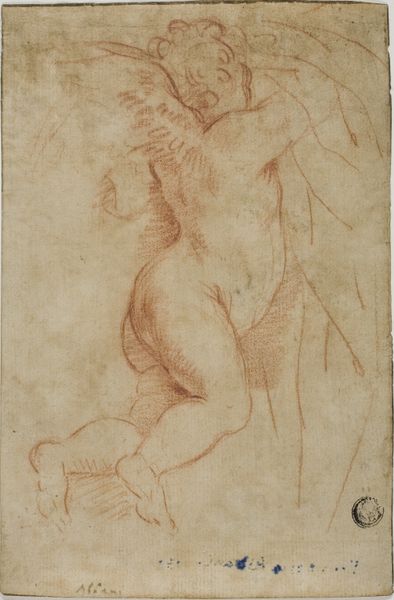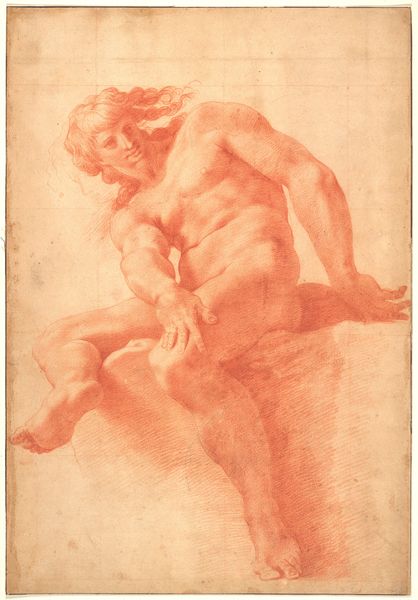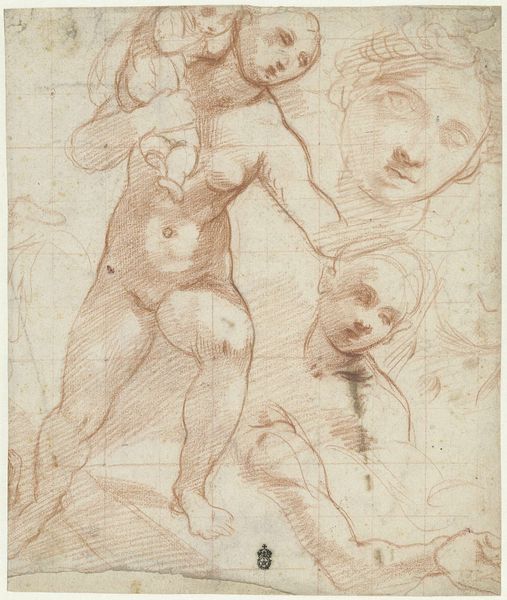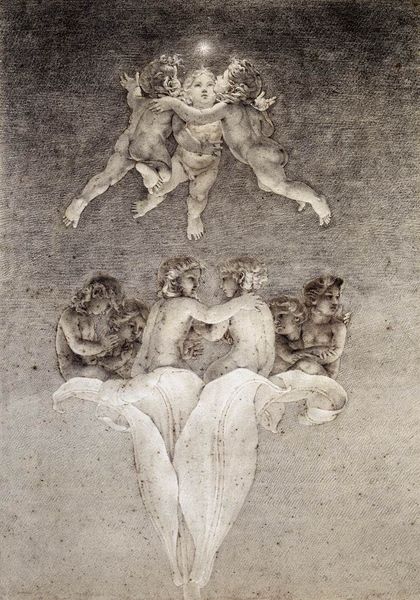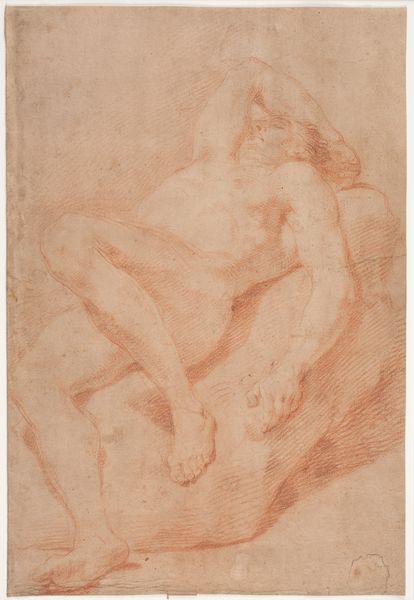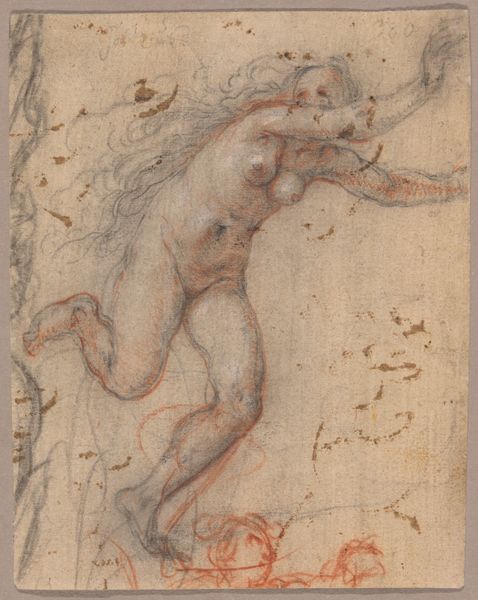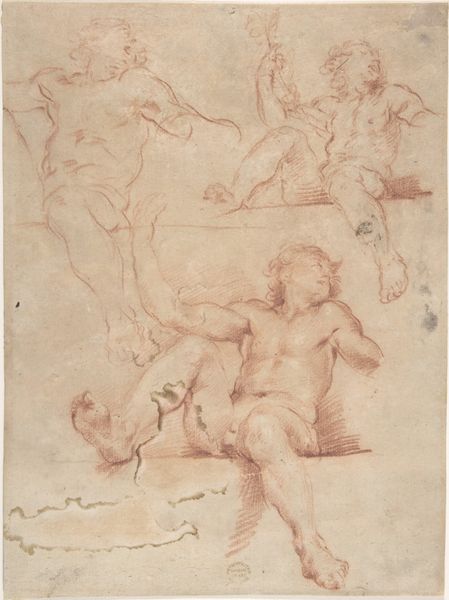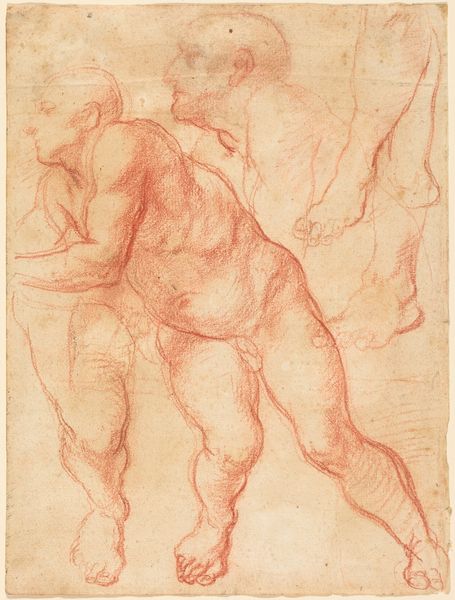
#
toned paper
#
charcoal drawing
#
possibly oil pastel
#
charcoal art
#
oil painting
#
acrylic on canvas
#
underpainting
#
human
#
painting painterly
#
charcoal
#
watercolor
Dimensions: 44.1 x 29.2 cm
Copyright: Public domain
Curator: What immediately strikes me is the artist’s fascination with feet. They're monumental. Editor: That's perceptive. We are currently looking at "Copy After Michelangelo's Aurora" by Bartolomeo Passerotti, created around 1550, a work rendered with charcoal and perhaps oil pastel on toned paper. Curator: "Copy After..." implies layers of artistic intention. It becomes a commentary on legacy, on power structures inherent in artistic replication, doesn't it? The deliberate choice to copy already monumental work amplifies themes of influence. Editor: Exactly! The drawing captures a figure derived from Michelangelo's sculpture of Aurora on the Medici tombs, part of an elaborate dance between sleep and awakening. There are so many layers. Beyond a record, or practice, this image, with it’s somewhat academic assemblage, explores what is essentially an objectification of a representation of an idealized woman as allegorical figure, while those feet could be read to reference a classical antiquity, now through a contemporary gaze. Curator: I am caught by that sense of sleep. She is heavy, monumental but heavy and vulnerable, too. This rendering doesn't imbue her with divine authority, though perhaps in that earlier instantiation of the Aurora, that of Michelangelo, that association was clearer? But the iconology is almost beside the point. Editor: Agreed. The fragmented nature creates an entirely new symbol, something far more intimate than perhaps either originator imagined. It hints at the physical, labor that shaped the original work. Curator: I see it also as an embodiment of the complex relationship between male artists and their female subjects. How the body is perceived through the lenses of power and aesthetic tradition... It also subtly disrupts the viewer's own gaze. The feet, while detailed and magnificent, also serve as a kind of barrier. Editor: A re-negotiation, in a way. Passerotti isn't merely replicating; he's reinterpreting, filtering through his own context. Curator: An unfinished quality too! A process made plain, without the visual completion we perhaps expect. The copyist implicates the source while allowing, demanding we reassess its themes. Editor: In observing the copy, we see something original unfold. Curator: The layers add to the conversation, yes, each adding new, potent ingredients to an enduring narrative.
Comments
No comments
Be the first to comment and join the conversation on the ultimate creative platform.
